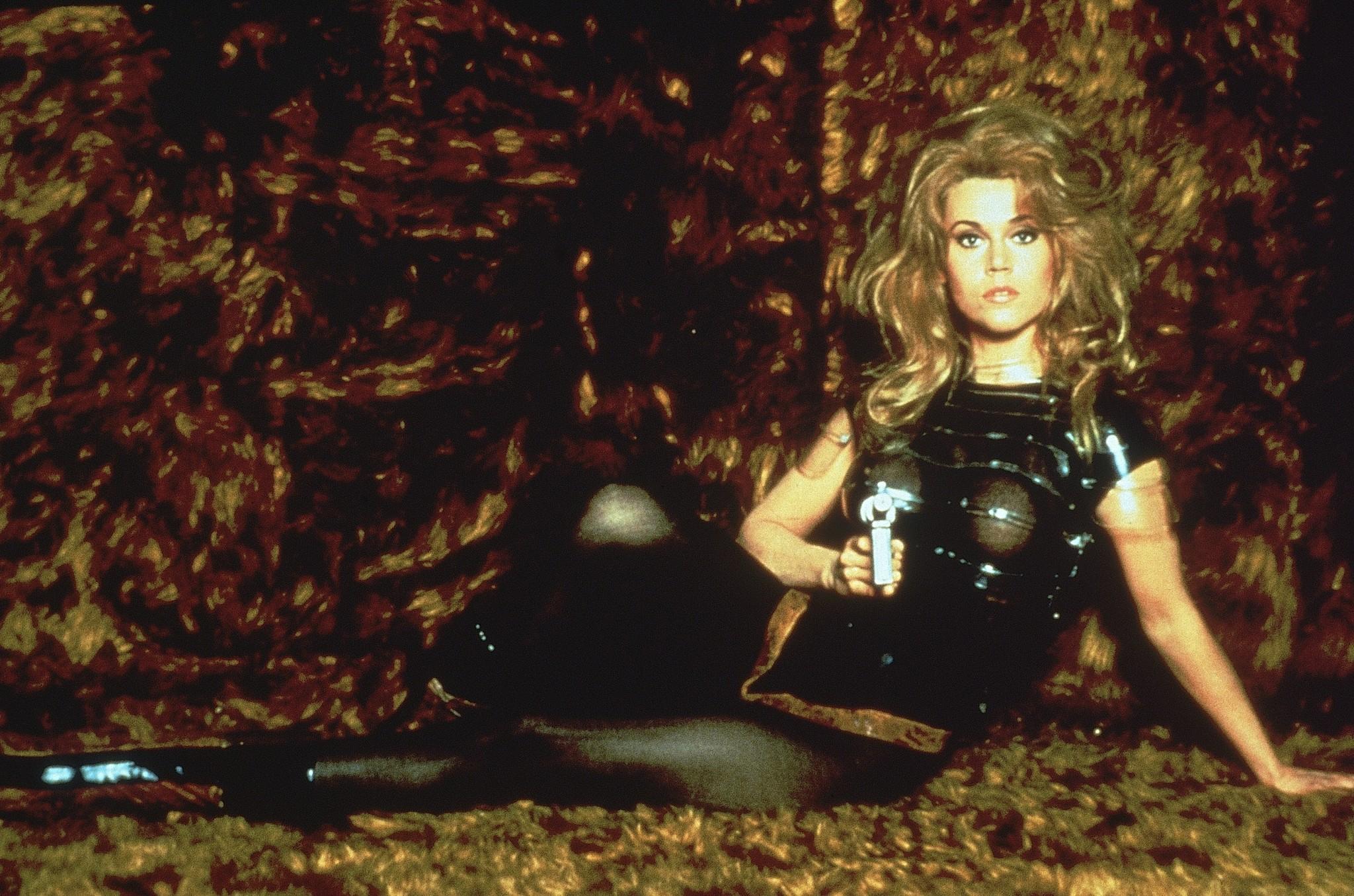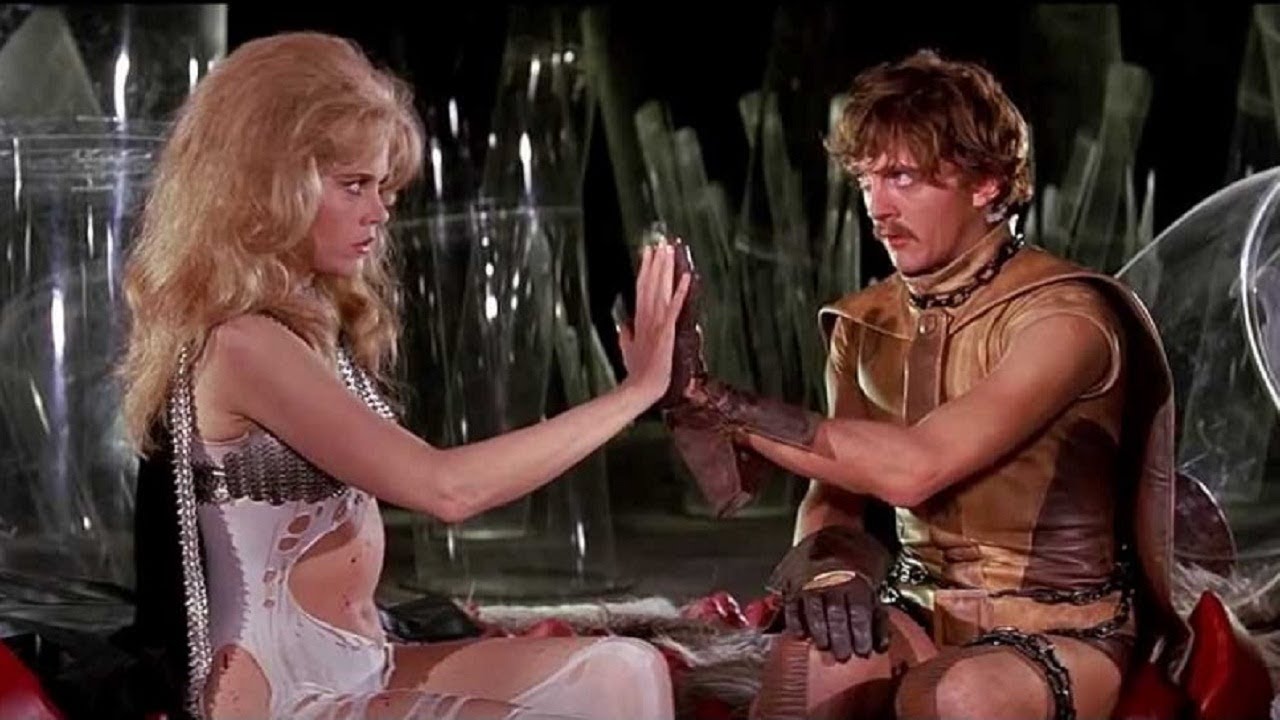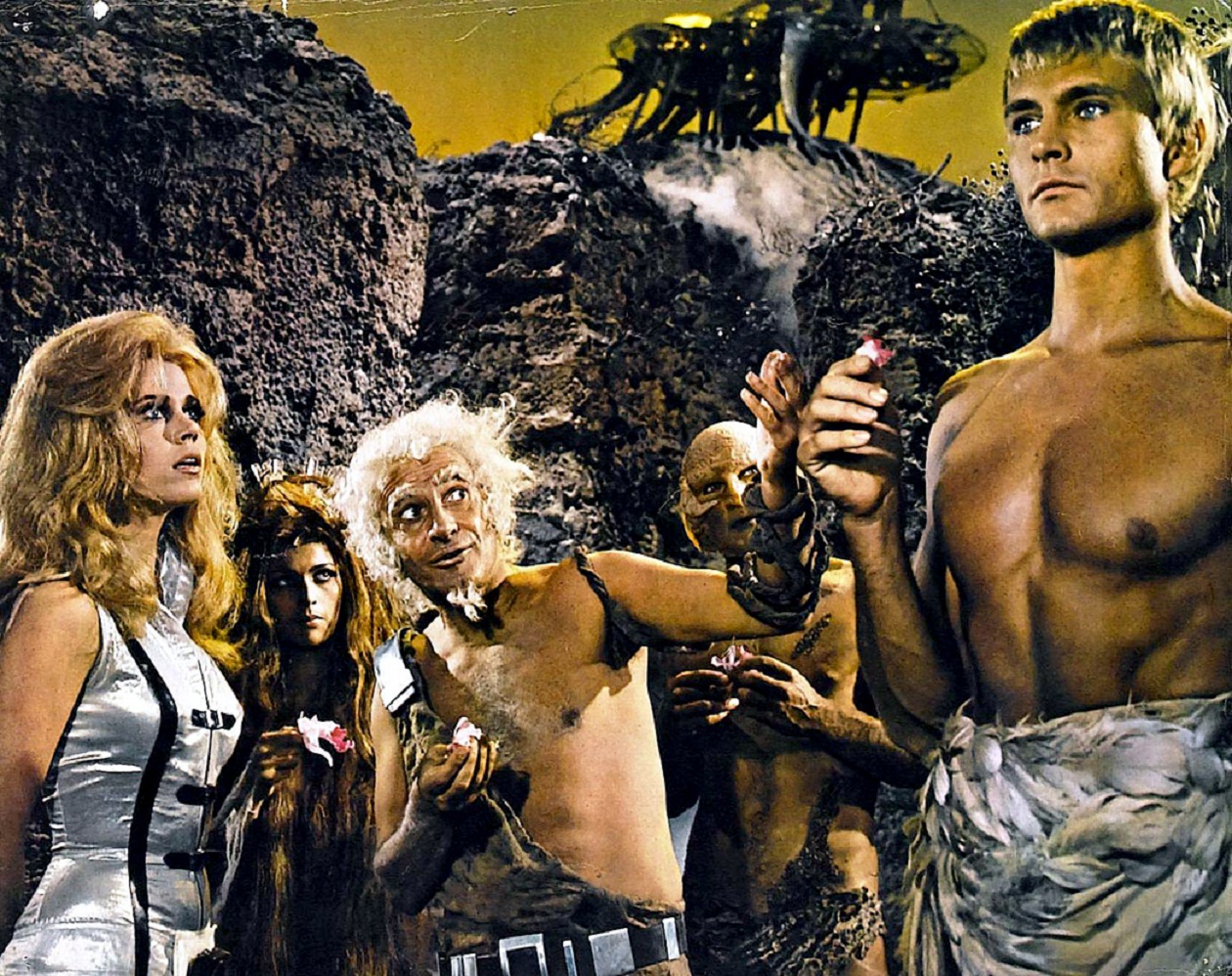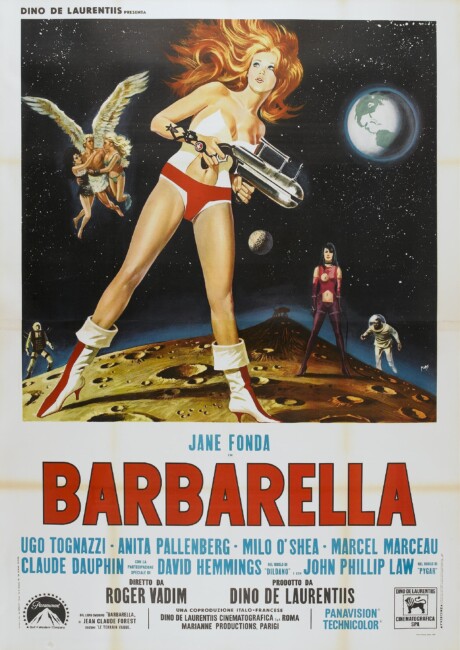Italy/France. 1968.
Crew
Director – Roger Vadim, Screenplay – Roger Vadim, Clement Biddle-Wood, Vittorio Bonicelli, Claude Brule, Brian Degas, Jean-Claude Forest, Tudor Gates & Terry Southern, Based on the Comic Created by Jean-Claude Forest, Producer – Dino De Laurentiis, Photography – Claude Renoir, Music – Maurice Jarre, Special Effects – August Lohman, Production Design – Mario Garbuglia, Artistic Consultant – Forest. Production Company – Dino De Laurentiis/Marianne.
Cast
Jane Fonda (Barbarella), John Phillip Law (Pygar), Milo O’Shea (Durand Durand), Anita Pallenberg (The Black Queen), David Hemmings (Dildano), Marcel Marceau (Professor Ping), Ugo Tognazzi (Mark Hand), Claude Dauphin (President Dianphis)
Plot
The space navigator Barbarella is sent to the Tau Ceti star system to find the missing scientist Durand Durand, creator of the deadly positronic ray. Amongst the bizarre inhabitants of the Planet 16, Barbarella discovers the joys of natural sex, which has been eliminated back on Earth as a distraction to efficiency. Aided by the blind angel Pygar, she enters the City of Sogo, beneath which a lake of living evil feeds on the depravities of the city’s inhabitants, to rescue Durand Durand. However, once inside the city she must face the evil Black Queen.
Barbarella is an adaptation of Jean-Claude Forest’s risque French comic-book, which was originally serialised in V magazine and then published as a series of four graphic novels between 1962 and 1981. (The film adapts the first of these). The film is directed by Roger Vadim, who achieved some international fame mostly by successively marrying Brigitte Bardot and Jane Fonda but also with mildly provocative (although now terribly dated) films like And God Created Woman (1958) and Blood and Roses (1960). Barbarella was the best of all Roger Vadim’s films.
In Barbarella, Roger Vadim achieves a perfect balance between softcore titillation, garish excess and nonchalant deadpan. The nuttiness starts the minute the film opens with Jane Fonda undressing in zero g as the credits bounce about the screen with letters coalescing to hide the naughty bits and the theme song contorting such rhyming couplets as ‘Barbarella’ and ‘Psychedela’.
The film comes filled with some charmingly naughty softcore throwaway gags – there is an hysterical scene where Barbarella is tortured in an organ that provides excessive sexual pleasure, only for her to succeed in blowing its fuses. In one scene, women sit around a hookah inhaling Essence of Man – which is revealed to be a man floating in a giant fish bowl.


There is at least one inspiredly silly sequence where Jane Fonda and David Hemmings make love by taking pills and touching hands – the expressions on either’s faces throughout makes the sequence side-splittingly funny no matter how many times you watch it. The entire film is so deliriously capricious it is like eating candyfloss. It is to no particular surprise that Barbarella has become a cult classic.
The sets are designed with gorgeously deranged excess – Barbarella’s spaceship comes with pink carpeted roofs and walls; there is a journey down into a beautiful crystalline labyrinth; and the Queen’s bedroom is a stand-out with giant lenses, psychedelic back-projections and a gilt-painted bed shaped in a female form.
Jane Fonda seems to go through a costume change about every five minutes – fishnets and plastic bras, giant-spotted cat tails, thigh-length boots, navel-length V-necks. The city is the kind of place where the populace can wear negligees, feather boas, leather jockstraps, giant lip-shaped headdresses, vertical plaits and plastic unicorn horns with perfect harmony.

Barbarella is the film that Jane Fonda would prefer to forget. It was made at the point she was married to Roger Vadim and well before becoming politically conscious. She gives an amusing performance of wide-eyed innocence, while managing a diverting line in psycho-sociological doubletalk. She is aided by a serenely aloof performance from John Phillip Law as the blind angel – he naturally lives in a nest and in another throwaway gag it seems perfectly normal at one point for Fonda to perform CPR by sitting on his back and cranking his wings.
Italian producer Dino De Laurentiis later attained notoriety with his disastrous remake of King Kong (1976). De Laurentiis also produced two other films in the same giddy comic-bookish style of Barbarella with Danger: Diabolik (1967) and the remake of Flash Gordon (1980). Barbarella is one film to which a sequel would be most welcome – up until his death in 2000, Roger Vadim promised to make one several times with actresses like Sherilyn Fenn and Drew Barrymore in the title role, but nothing ever emerged. More recently, director Robert Rodriguez announced a remake to star Rose McGowan, although this has yet to emerge. Barbarella‘s most famous legacy in pop culture though may well have ended up being 1980s mega-successful pop group Duran Duran borrowing their name from Milo O’Shea’s mad scientist in the film.
Roger Vadim’s other genre films of note were:- Blood and Roses (1960), an adaptation of the lesbian vampire classic Carmilla (1872), and the Metzengerstein episode of the Edgar Allan Poe anthology Tales of Mystery and Imagination/Spirits of the Dead (1968), also starring Jane Fonda.
Trailer here


